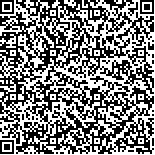下载中心
优秀审稿专家
优秀论文
相关链接
摘要

相机分系统是“浦江一号”卫星的关键载荷之一。它在光学系统、指向摆镜以及电子学设计方面均坚持集成化、小型化的思想。整机结构紧凑,体积小,重量轻。相机光学系统选择三反离轴结构,与同轴系统相比,具有视场大、无遮拦、传函高等优点。通过光学设计合理布局,有效控制了光学系统尺寸;合理优化光学系统公差,降低了机械设计难度和装调难度;光学系统后截距对镜间距变化不敏感,在没有调焦机构时仍能满足清晰成像的要求。相机利用摆镜机构实现多目标快速指向,能在一个成像周期内对多个目标成像,反应时间短,成像效率高。摆镜指向机构采用电机+齿轮组的驱动方式;光电编码器与指向镜同轴安装,能够精确测量指向角度,对目标准确定位。在一个电子设备内集成视频成像、图像压缩及编码、遥控遥测、控温以及供配电等功能。对外采用标准的即插即用1553B接口以及小型高速Spacewire数传接口,实现了设备快速组装和测试。电路的集成化设计,减少了设备数量,进而减少了整个系统的体积、重量和功耗。卫星在轨运行以后,结合用户需求,优化在轨测试流程,卫星入轨1个月内完成了相机的全部测试和评估工作。迄今为止,相机运行正常,性能优越。该相机的研制成功及在轨稳定运行,为后续高性能轻小型相机的设计提供了有力的技术支撑。
“Pujiang-1” satellite was successfully launched by the ChangZheng-11 vehicle from the JiuQuan Satellite Launch Center, China on September 25, 2015. The camera subsystem is one of the key payloads of the “Pujiang-1” satellite. The optical system, the pointer mirror mechanism, and the electronics of the camera were designed and produced under the concept of integration and miniaturization, which led to the compact, small, and light weight structure of the camera. With the novel design of the off-axis three-mirror reflective optical system, the camera includeda larger field of view and higher MTF value without a cover compared with the traditional coaxial system. By optimizing the layout of the optical elements, small volume was achieved. The difficulty of mechanical design and alignment was also reduced by optimizing the tolerance of the optical system. Additionally, this optical system was designed without a focusing mechanism but it could still address imaging needs because the back focal length was insensitive to the spacing change of the mirror. The camera used the pointer mirror mechanism to realize multi-target rapid pointing, enabling the capturemulti-target in each single imaging cycle, thereby shortening reaction time and improving imaging efficiency. The pointer mirror mechanism adopted the motor and gear set drive mode. The photoelectric encoder was installed coaxially with the mirror, with which the point angle can be precisely and accurately measured. In the electronic part, several functions, such as video imaging, image compression and coding, remote telemetry, temperature control, and power supply and distribution were integrated into one device. Standard plug-and-play 1553B communication and small-shape high-speed SpaceWire transmission interfaces were adopted to achieve rapid assembly and testing equipment in line with the modular design trend. The integrated circuit design reduced the number of devices, the overall system volume, system weight, and power consumption. After the satellite operating in-orbit, the in-orbit commissioning process was optimized combined with user needs. All the test and evaluation work were completed within one month.The camera normallyoperated with superior performance until today. The successful development of this camera and in-orbit stable operation provides a strong technical support for the follow-up high-performance light and smart cameras.

